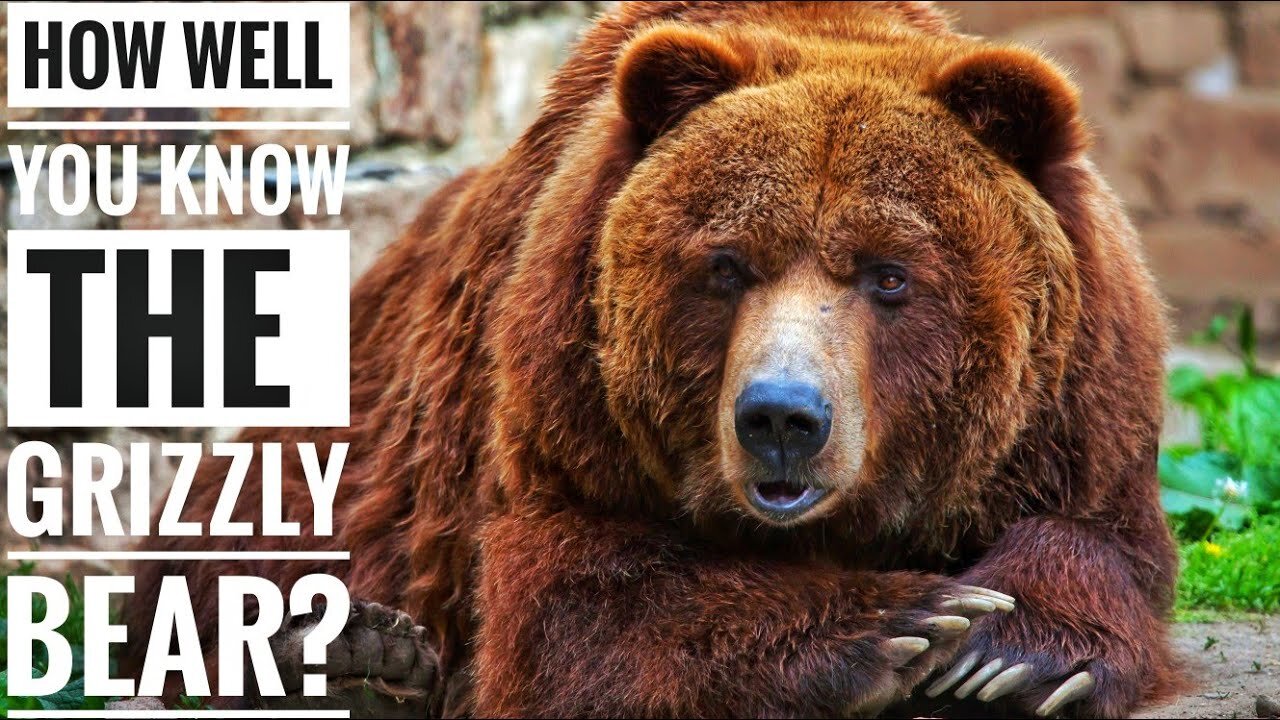Premium Only Content

Grizzly Bear -- Description, Characteristics and Facts!
Description:
Grizzly bears are typically brown in color, though they can range from blonde to almost black. Their fur is dense and often grizzled, giving them their name. Adult males, known as boars, can weigh up to 700 pounds or more, while females, called sows, are generally smaller, weighing around 400 to 500 pounds. These bears have a distinctive shoulder hump, which is a mass of muscles used for digging and foraging. Their powerful jaws are lined with sharp teeth, adapted for tearing through tough hides and meat.
Characteristics:
Strength and Size: Grizzlies are one of the largest land predators in North America, capable of taking down large prey such as elk and moose.
Solitary Nature: While they may tolerate each other's presence, grizzly bears are typically solitary animals, except during mating season or when a sow is accompanied by her cubs.
Omnivorous Diet: Despite being carnivores, grizzlies have an omnivorous diet, feeding on a variety of foods including berries, roots, insects, fish, and mammals.
Hibernation: During the winter months, grizzly bears enter a state of hibernation to conserve energy when food is scarce. They can go without eating, drinking, urinating, or defecating for months.
Territorial Behavior: Grizzlies are known to mark their territories using scent markings and scratches on trees. They can be highly territorial, especially during the mating season or when defending food sources.
Facts:
Despite their massive size, grizzly bears can run at speeds of up to 35 miles per hour for short distances.
They have an incredibly keen sense of smell, which they use to locate food from miles away.
Grizzly bears play a crucial role in their ecosystems as apex predators, helping to regulate prey populations and maintain ecosystem balance.
Conservation efforts have been implemented to protect grizzly bear populations, as they have faced habitat loss and human-wildlife conflicts.
#GrizzlyBear #Wildlife #Nature #Conservation #Predator #NorthAmerica #Biodiversity
-
 LIVE
LIVE
The Shannon Joy Show
2 hours ago🔥🔥World War III? Israel Pummels Iran And The War Drums Are Beating. Are You Ready To Send Your Sons & Daughters? 🔥🔥
257 watching -
 32:36
32:36
Tudor Dixon
1 hour agoTrump, Musk & the Media Machine with Miranda Devine | The Tudor Dixon Podcast
6.5K -
 1:01:27
1:01:27
VINCE
4 hours agoYou'll Never Believe The Left's Latest Ridiculous Tactic | Episode 64 - 06/13/25
195K225 -
 3:53:04
3:53:04
LFA TV
13 hours agoLFA TV ALL DAY STREAM - FRIDAY 6/13/25
129K20 -
 DVR
DVR
Bannons War Room
3 months agoWarRoom Live
21.9M5.64K -
 1:49:34
1:49:34
Benny Johnson
2 hours ago🚨Trump RAGES After Israel Bombs Iran in Massive Attack, World War 3: ‘They’re All DEAD!’
62K69 -
 1:08:23
1:08:23
The Big Mig™
4 hours agoMiddle East Meltdown, We All Lose
22.6K11 -

Caleb Hammer
2 hours agoDave Ramsey Was Wrong, Now She's F*cked | Financial Audit
14.4K1 -
 35:36
35:36
Rethinking the Dollar
2 hours agoBombs Drop, Stocks Flop & GOLD Pops | Morning Check-In
21.1K2 -
 1:07:59
1:07:59
Dear America
4 hours agoWW3?! Israel STRIKES Iran!! + Judge BLOCKS Trumps National Guard In LA!! WHAT IS HAPPENING‼️
105K217